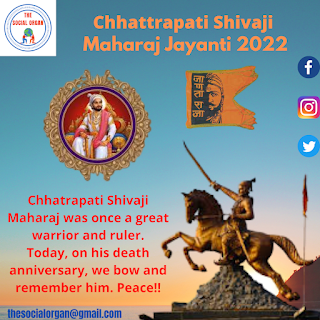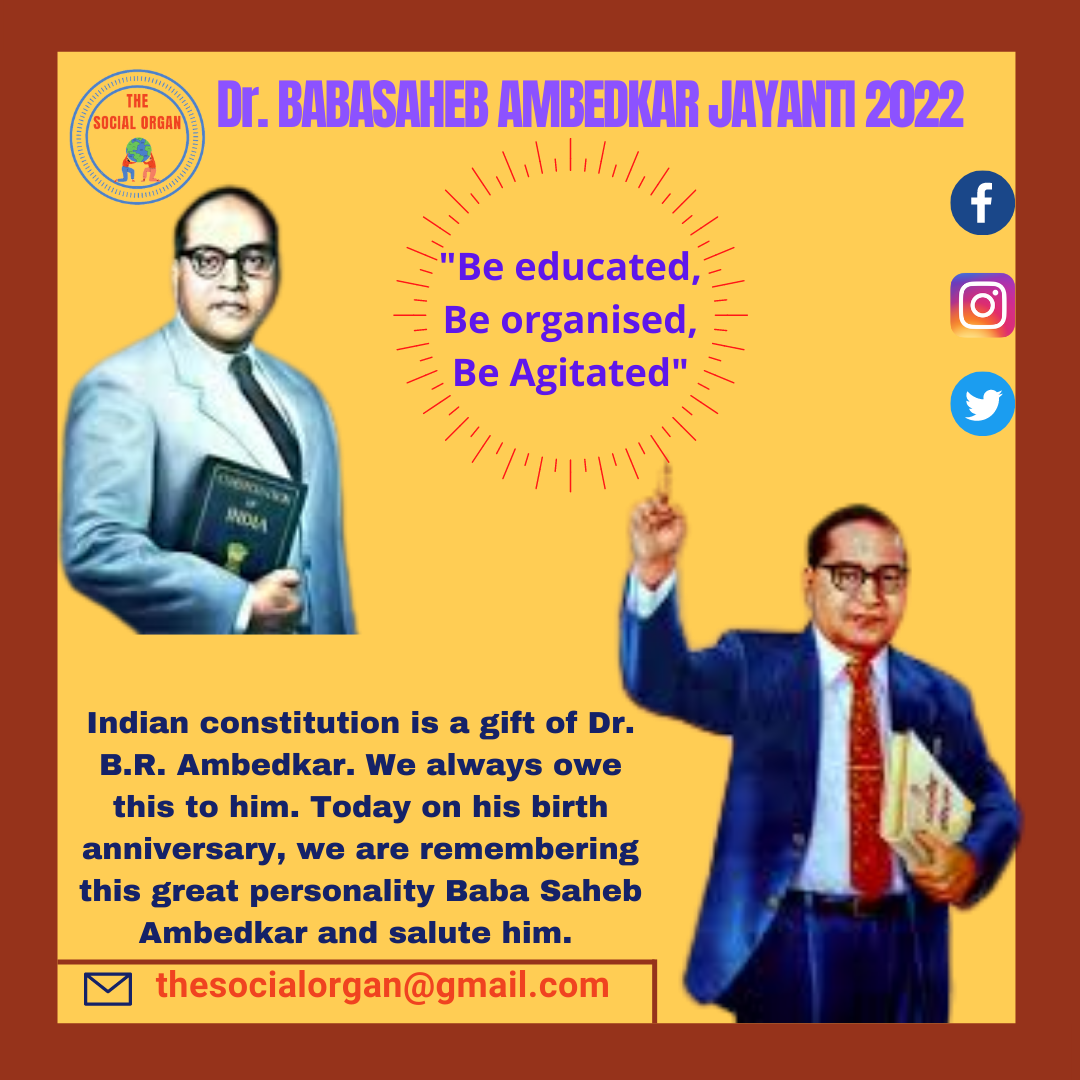Chhattrapati Shivaji Maharaj Jayanti 2022
Every year 3rd April is observed as Chhattrapati Shivaji Maharaj Jayanti. Chhattrapati Shivaji Maharaj (Shivaji Bhonsale) was born on 19th February, 1630- 3rd April 1680, was an Indian ruler and a member of the Bhonsle Maratha clan. Shivaji carved out an enclave from the declining Adilshahi sultanate of Bijapur that formed the genesis of the Maratha Empire. In 1674, he was formally crowned the Chhatrapati of his realm at Raigad Fort.
Over the course of his life, Shivaji engaged in both alliances and hostilities with the Mughal Empire, the Sultanate of Golkonda, Sultanate of Bijapur and the European colonial powers. Shivaji's military forces expanded the Maratha sphere of influence, capturing and building forts, and forming a Maratha navy. Shivaji established a competent and progressive civil rule with well-structured administrative organisations. He revived ancient Hindu political traditions, court conventions and promoted the usage of the Marathi and Sanskrit languages, replacing Persian in court and administration. Shivaji's legacy was to vary by observer and time, but nearly two centuries after his death, he began to take on increased importance with the emergence of the Indian independence movement, as many Indian nationalists elevated him as a proto-nationalist and hero of the Hindus.
Shivaji was born in the hill-fort of Shivneri, near the city of Junnar, which is now in Pune district. Scholars disagree on his date of birth. The Government of Maharashtra lists 19 February as a holiday commemorating Shivaji's birth (Shivaji Jayanti). Shivaji was named after a local deity, the goddess Shivai. Shivaji's father Shahaji Bhonsle was a Maratha general who served the Deccan Sultanates. His mother was Jijabai, the daughter of Lakhuji Jadhavrao of Sindhkhed, a Mughal-aligned sardar claiming descent from a Yadav royal family of Devagiri.
In 1636, the Adil Shahi sultanate of Bijapur invaded the kingdoms to its south. The sultanate had recently become a tributary state of the Mughal empire. It was being helped by Shahaji, who at the time was a chieftain in the Maratha uplands of western India. Shahaji was looking for opportunities of rewards of jagir land in the conquered territories, the taxes on which he could collect as an annuity.Shahaji was a rebel from brief Mughal service. Shahaji's campaigns against the Mughals, supported by the Bijapur government, were generally unsuccessful. He was constantly pursued by the Mughal army and Shivaji and his mother Jijabai had to move from fort to fort. In 1636, Shahaji joined in the service of Bijapur and obtained Poona as a grant. Shivaji and Jijabai settled in Poona. Shahaji, being deployed in Bangalore by the Bijapuri ruler Adilshah, appointed Dadoji Kondadeo as administrator. Kondadeo died in 1647 and Shivaji took over the administration. One of his first acts directly challenged the Bijapuri government.
In 1646, 16-year-old Shivaji took the Torna Fort, taking advantage of the confusion prevailing in the Bijapur court due to the ailment of the Sultan, and seized the large treasure he found there. In the following two years, Shivaji took several important forts near Pune, including Purandhar, Kondhana and Chakan. Also, he brought Supa, Baramati and Indapur under his direct control. He used the treasure found at Torna to build a new fort Rajgad, which served as his capital for over a decade. After this, Shivaji turned to the Konkan and took possession of the important town of Kalyan. Bijapur government took note of these happenings and sought to take action. On 25 July 1648, Shahaji was imprisoned by a fellow Maratha sardar called, Baji Ghorpade under the orders of Bijapur government, in a bid to contain Shivaji. Shivaji also faced conflicts like Afzal Khan, Battle of Pavan Khind, With the Mughals.
Shivaji died around 3–5 April 1680 at the age of 50,on the eve of Hanuman Jayanti. The cause of Shivaji's death is disputed. British records states that Shivaji died of bloody flux being sick for 12 days. In a contemporary work in Portuguese, the Biblioteca Nacional de Lisboa, the recorded cause of death of Shivaji is anthrax. However, Krishnaji Anant Sabhasad, author of Sabhasad Bakhar, the biography of Shivaji has mentioned fever as the cause of death of Shivaji.Putalabai, the childless eldest of the surviving wives of Shivaji committed sati by jumping into his funeral pyre. Another surviving spouse, Sakwarbai, was not allowed to follow suit because she had a young daughter. There were also allegations, though doubted by later scholars, that his second wife Soyarabai had poisoned him in order to put her 10-year-old son Rajaram on the throne.After Shivaji's death, Soyarabai made plans with various ministers of the administration to crown her son Rajaram rather than her stepson Sambhaji. On 21 April 1680, ten-year-old Rajaram was installed on the throne. However, Sambhaji took possession of Raigad Fort after killing the commander, and on 18 June acquired control of Raigad, and formally ascended the throne on 20 July.Rajaram, his wife Janki Bai, and mother Soyrabai were imprisoned, and Soyrabai executed on charges of conspiracy that October.
Hence, Shivaji was well known for his strong religious thinking and warrior code of ethics .He was recognized as a national hero during the Indian Independence Movement. And establishment of Maratha Empire is dedicated to Shivaji Maharaj only.
Once in a lifetime great warrior and Ruler.
We Salute and remeber him on his death anniversary today. Om Shanti!!




Comments
Post a Comment
Please do not enter any spam link in the comment box.